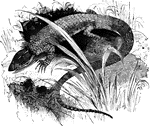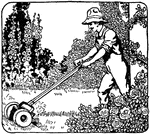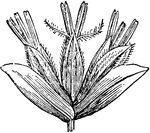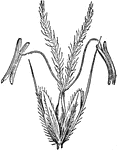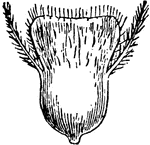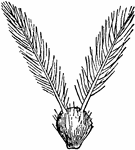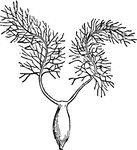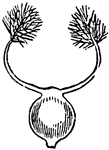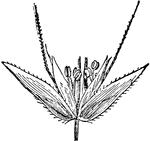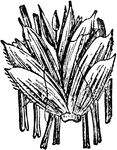Wheat
Wheat (Triticum vulgare) is an annual herbaceous plant. The seed is oblong, or a compressed oval, surrounded…
Wheat
Wheat (Triticum vulgare) is an annual herbaceous plant. The seed is oblong, or a compressed oval, surrounded…
Wheat
Wheat (Triticum spelta) is an annual herbaceous plant. The seed is oblong, or a compressed oval, surrounded…
Wheat
Wheat (Triticum spelta) is an annual herbaceous plant. The seed is oblong, or a compressed oval, surrounded…
Wild Oat Grass
Wild Oat Grass (Danthonia spicata), also referred to as White Top grass, and Old Fog grass, is common…

Wild Oat Grass
Wild Oat Grass (Danthonia spicata), also referred to as White Top grass, and Old Fog grass, is common…

Wild Oat Grass
Wild Oat Grass (Danthonia spicata), also referred to as White Top grass, and Old Fog grass, is common…

Wild Oat Grass
Wild Oat Grass (Danthonia spicata), also referred to as White Top grass, and Old Fog grass, is common…
Wild Oat Grass
Wild Oat Grass (Danthonia spicata), also referred to as White Top grass, and Old Fog grass, is common…

Wood Hair Grass
Wood Hair grass (Aira flexuosa), also known as Common Hair grass, is a common grass found on dry and…
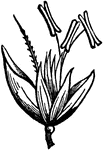
Wood Hair Grass
Wood Hair grass (Aira flexuosa), also known as Common Hair grass, is a common grass found on dry and…

Wood Meadow Grass
Wood Meadow Grass (Poa nemoralis) grows from eighteen inches to two feet high. It has a perennial, creeping…

Wood Meadow Grass
Wood Meadow Grass (Poa nemoralis) grows from eighteen inches to two feet high. It has a perennial, creeping…
Yellow Oat Grass
The Yellow Oat Grass (Avena flavescens) is a perennial grass siutable for dry meadows and pastures.…

Yellow Oat Grass
The Yellow Oat Grass (Avena flavescens) is a perennial grass siutable for dry meadows and pastures.…
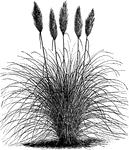
Gynerium Argenteum
The common name of gynerium is pampas grass. Gynerium argenteum grass reaches between six and ten feet…
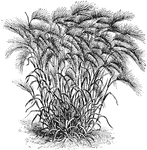
Hordeum Jubatum
The common name of hordeum jubatum is squirrel tail grass. The flowers on this grass bloom in June.…

Juncus Acutiflorus
Juncus acutiflorus belongs to a genus of grass-like herbs (Juncus) that grow in boggy places.

Juncus Compressus
Juncus compressus belongs to a genus of grass-like herbs (Juncus) that grow in boggy places.
Juncus Conglomeratus
Juncus conglomeratus, also known as the common rush, belongs to a genus of grass-like herbs (Juncus)…

Juncus Glaucus
Juncus glaucus belongs to a genus of grass-like herbs (Juncus) that grow in boggy places.

Juncus Squamosus
Juncus squamosus belongs to a genus of grass-like herbs (Juncus) that grow in boggy places.

Lagurus Ovatus
Lagurus ovatus is an attractive grass with soft white, woolly heads. The heads are one to two inches…
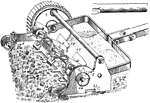
Rotary Lawn Mower
Rotary lawn mowers were not developed until there were small enough and powerful enough to run the blades…
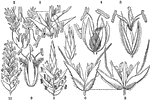
Grass Locusta
"1. Locusta of Corynephorus canescens (Grey Hair-grass); 2. paleae, &c. of the same; 3. locusta of Phalaris…

Ankee Millet
"'Ankee' Millet: a and b, two views of the spikelet; c and d, two views of the 'seed.'" -Department…

Broom-Corn Millet
"Broom-corn Millet: a, b, and c, views of the spikelet and glumes, or chaff; d and e, two views of the…

German Millet
"German Millet: a and b, two views of the spikelet with its cluster of three "beards;" c, 'seed.'" -Department…

Shama Millet
"Shama Millet: a, b, c, d, different views of the spikelet and glumes, or chaff; e, f, two views of…

Ornate Banner with Leaves, Flowers, and Branches
This ornate banner features branches with leaves and flower buds as well as blades of grass. Each corner…
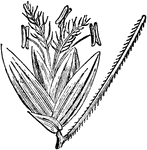
Panicacae
"Panicacae. Spikelet of Setaria, with an abortive branch beneath it." — Encyclopedia Britannica,…
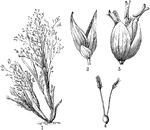
Panicum Capillare
Pictured are the habit, spikelet, spikelet with outer palea removed, and ovary with long style and plumose…
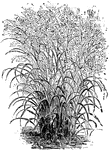
Panicum Virgatum
Panicum virgatum is a variety of panick-grass. The grass grows three to five feet tall.
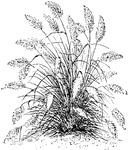
Pennisetum Longistylum
The flower clusters of pennisetum longistylum grow in spikes from four to six inches long. The leaves…
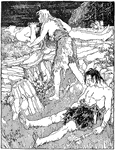
Prehistoric People
In prehistoric times, a woman finds sleeping men from a different tribe and studies them.

Giant Reed
"Bamboo-reed (Arundo donax). a, panicle; b, flowering scale, clothed with silky hairs; c, spikelet."…
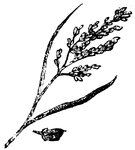
Rice
Rice is a food staple in more than 39 countries. There are many different varieties of rice. They vary…


